Paralysis Tick Prevention and Treatment for Dogs, Cats
Paralysis ticks
Although ticks are found all over the world, the paralysis tick (Ixodes holocyclus) is only found in Australia. It is restricted to the humid east coast of Australia from North Queensland to Northern Victoria. We’re not the only ones who appreciate the natural beauty of Sydney’s Ku Ring Gai area, because paralysis ticks are particularly prevalent on the North Shore and Northern Beaches.
Each spring and summer we have a map of the Ku Ring Gai area in our reception, with locations of tick paralysis patients from that season marked. This is very helpful to identify the areas where ticks are more prevalent.
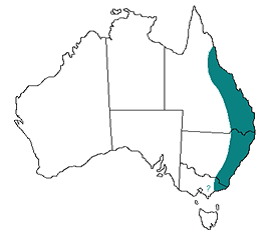
The east coast of Australia is where paralysis ticks are prevalent
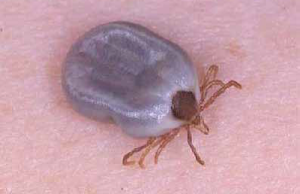
The Paralysis Tick (Ixodes holocyclus)
Where are they found?
Possums and Bandicoots are the natural hosts of the paralysis tick, and as with other Australian native wildlife, are usually unaffected by their toxin. I.e. it does not harm. However, the paralysis tick quite happily feeds on dogs, cats and humans. Ticks attach to our pets as they walk through grass or bushes where native animals, particularly possums and bandicoots have been. This means that all the National parks and bushland around the North Shore of Sydney are high risk areas. In fact, most pets become affected without even leaving their backyard. Ticks may fall out of a tree onto a pet, or may crawl onto them from the ground. Even backyards that have previously seemed safe from ticks cannot be relied upon as being tick free. Who knows when a possum or bandicoot is going to wander through?
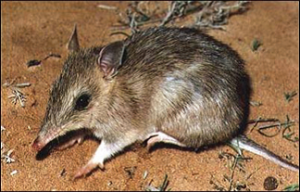
The bandicoot – a natural host of the paralysis tick

The possum – a natural host of the paralysis tick
The worst time for tick paralysis is from August through to February, but at Gordon Vet Hospital we treat patients for tick paralysis all year round. In our experience, ticks are particularly prevalent when rain follows a period of warm weather. In Sydney, that is not uncommon.
In recent years at Gordon Vet, we have seen an increase in the number of cases of tick paralysis. We suspect that global warming, changing weather patterns and increasing numbers of possums and bandicoots is causing a rise in the tick population. Local yard factors such as overgrown areas, composting and mulching are also contributors. Grassy, shady areas under trees, where people and dogs congregate at parks, are also a problem.
The paralysis tick life cycle
After hatching from an egg, the larval tick climbs onto nearby vegetation, waiting for an animal to come by. Usually this would be a possum or bandicoot, however if a dog or cat wanders by, they don’t discriminate. The larval tick burrows its mouthparts into the animal’s skin and starts to suck blood, injecting a neurotoxin as it feeds. Although the tick starts off small, it grows in size as it fills with blood. Once the larval tick has had its fill, it drops off, moults and becomes a nymph tick. The feeding and moulting process is then repeated using a new host animal. After this stage the tick becomes the most dangerous life stage, an adult paralysis tick. Once the female adult paralysis tick has filled with blood, she drops off her host and lays up to 3000 eggs, ready to start the whole cycle again.

The sizes of paralysis ticks through their life stages
Signs of tick paralysis
As they feed, female paralysis ticks inject a neurotoxin that binds to the point where nerves meet muscles. It usually takes about 3-4 days of feeding before sufficient toxin is injected to cause signs of illness. Initial signs are vague, but progress over the following few days. The most common clinical signs that we see are:
- Vomiting, regurgitating or refusing to eat
- A change in voice (bark or meow may become hoarse)
- Weakness in the back legs
- Lack of coordination or inability to climb stairs, (may progress to collapse and paralysis)
- Breathing problems – panting, coughing or slow laboured breathing
- It is important to know that occasionally patients will not develop the usual signs of tick
- paralysis, and may show other signs of illness.
As the poisoning progresses, pets become unable to stand and have extreme difficulty breathing. Eventually, untreated tick poisoning will result in death.
Removing a paralysis tick from your pet
If you are ever unsure if something is a tick or not, please do not hesitate to phone and make a time for one of our vets or nurses to have a look and let you know. Adult paralysis ticks have very long barbed mouthparts which embed in the pet’s skin, which makes them hard to remove. Ticks can be removed with tweezers by grasping the tick as close to the skin as possible, or preferably with a Tick Twister. If the mouthparts break off, the tick will be dead and hence cannot produce any more toxin or burrow any deeper. The site may become infected, so we do recommend removing the mouthparts if possible and treating with an antiseptic.
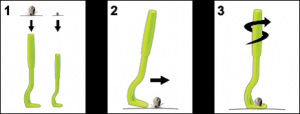
How to use a Tick Twister
Please take care and monitor your pet very closely after removing a tick. Do not exercise them and only offer small amounts of food and water. Due to the slow action of the tick toxin, a pet may develop tick paralysis up to several days after a tick has been removed.
If your pet is showing any signs of illness at all, or if the tick you removed was large, please phone Gordon Vet immediately to arrange an appointment. The sooner your pet is treated, the better their chance of recovery.
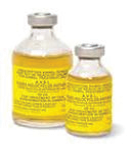
A bottle of Tick Anti serum
Tick paralysis treatment at Gordon Vet
If you suspect that your pet may have a tick, or if you find a tick on your pet, please phone Gordon Vet immediately. We will ensure that your pet is seen as a priority.
On arrival, we will examine your pet thoroughly, assess the grade of tick paralysis and provide any emergency care that is needed. Tick patients are given an injection of a sedative to ensure they are calm and not stressed. We then place an intravenous catheter in one of the forelegs and administer the tick antitoxin via a drip. This product is made from the serum of hyper immune dogs, and as a blood product, is given with great care. The tick antitoxin is not an antidote. It can only neutralise the toxin that has not yet bound to the nerve endings, and hence is most effective if it is given as soon as possible. It does not give patients ongoing immunity to ticks. Pets are tick searched and tick rinsed to ensure there are no remaining ticks.

A paralysis tick being identified and removed
Most pets with tick poisoning develop paralysis of their larynx and their oesophagus. They lose the ability to swallow food and water and move it down to their stomach, and are at an increased risk of regurgitation and severe pneumonia. It is essential that we do not add to this problem by giving them food or water. At Gordon Vet, we regularly assess their ability to swallow, and once they are able to we offer them water and then food. Additionally, we suction out any fluid that pools in the back of their throat to make breathing easier.
It is common for tick paralysis patients to need eye care if they lose the ability to blink, and bladder care if they lose the ability to pass urine. Importantly they all need calm, quiet and TLC.
Pets often need intravenous fluids in order to maintain their hydration. Unfortunately some pets develop pneumonia and more severe breathing difficulties. They may need radiographs, intravenous antibiotics, blood gas analysis, intubation, and ventilation. All of this treatment can be done at Gordon Vet. We also transfer patients to an emergency hospital if needed.
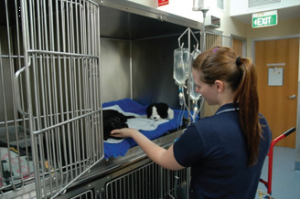
Hospitalisation is important for recovery from tick paralysis
It is important to note that tick paralysis can be very unpredictable. Patients can occasionally get worse suddenly and unexpectedly. Some also have a very slow recovery. We will endeavour to keep you updated with your pet’s progress, prognosis and cost of treatment, however if you have any concerns please do not hesitate to ask.
Larval ticks
Larval paralysis ticks, commonly known as ‘grass ticks’ are particularly prevalent in autumn and winter. When they first attach they are almost impossible to see; only 0.5mm in diameter. As they feed over the next 4 to 6 days, they swell and become more visible. At Gordon Vet we see many dogs and cats showing signs of distress and intense irritation from the feeding larval paralysis ticks. Occasionally a small animal may have enough larval ticks to cause signs of tick poisoning. A Frontline spray done correctly will kill the larval ticks, which fall out over the next few days.
Tick Prevention
At Gordon Vet, we strongly recommend two important components of tick prevention. Both need to be done.
1. A daily tick search: This must be done every day during the tick season, even if your pet is on tick prevention. Most ticks are found on the pet’s head, neck or shoulders. The most effective way to tick search is to systematically run your fingers along their skin until you have checked their entire body. You are more likely to feel a tick with your fingers than see one. Don’t stop searching if you find a tick, as many pets will have a second one. Grooming and clipping long haired animals in spring and summer makes it easier to find a tick.
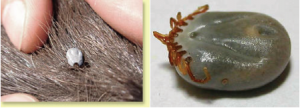
A paralysis tick in the fur and an engorged paralysis tick
2. Tick Prevention:
a. Dogs
The two choices are to use an oral medication or topical/spot on product.
Nexgard is a monthly chewable tablet that controls fleas and paralysis ticks when given monthly. It is ideal that this is given all year round. It is only suitable for dogs. Nexgard is unaffected by swimming or bathing and is safe to be given from 8 weeks of age. Occasionally it may cause vomiting or diarrhoea.
Advantix is a topical product that is applied to your dog’s skin (back of the neck) every two weeks for tick control. It also controls fleas. Dogs should not swim or have a bath within two days of application of Advantix. It is safe to use in puppies from 7 weeks of age. Advantix is highly toxic to cats. It should never be applied to a cat and care should be taken when using it on a dog when there is a cat in the family.
Frontline Top Spot is another topical product applied to your dog’s skin every two weeks. It is safe to use from 8 weeks of age. Additionally it comes as a spray which can be used to saturate the entire coat every three weeks. It is safe to use from 2 days of age. Dogs should not swim or have a bath within two days of application of Frontline products.
Tick Collars: There are several tick collars on the market which may be used as an adjunct to one of the above methods in dogs only.
b. Cats
When choosing a tick preventative for your cat always choose a product that is registered for use in cats. Several dog tick products are highly toxic to cats, so never apply a product to a cat that is not specifically for cats. If you have applied a dog product to your cat, please phone Gordon Vet immediately on 9498 3000.
Frontline Spray is the only registered tick preventative for cats. Your cat needs to have its entire coat sprayed so that it is saturated, every three weeks. It is safe to use from just 2 days of age. The entire body must be sprayed, which can be difficult to do. If you prefer, we will spray your cat with Frontline for you at Gordon Vet. Just give us a call and make a time with one of our nurses.
Frontline Top Spot is another topical product applied to your cat’s skin every two weeks. It is not registered as a tick preventative for cats, however many cat owners use this product because it is less stressful to apply than the Frontline Spray. It is safe to use from 8 weeks of age.
If your pet has a tick, or you are concerned that they may have one, please phone Gordon Vet immediately on 9498 3000. We are open from 7am to 7pm on weekdays and from 7:30am-5pm on Saturdays and 10am-2pm on Sundays. Outside these hours please phone our number and you will be given directions to the Northside Emergency Veterinary Service.
